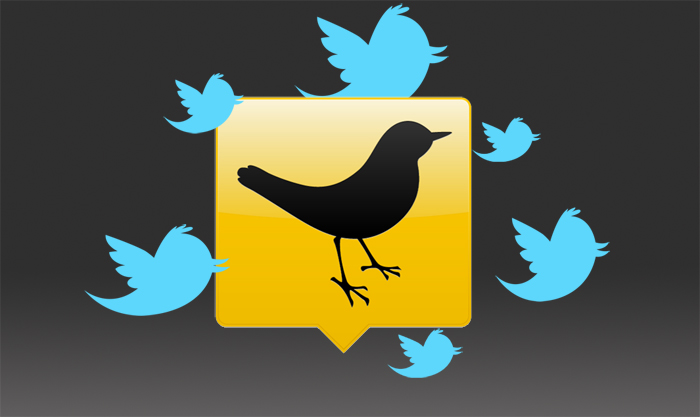Those of us who were early adopters of Twitter became well acquainted with the above image. The new 140 character instant communication system seemed to temporarily collapse under the weight of its own success on a daily basis.
But we stuck it out and so did Twitter and I actually can’t remember the last time the “Fail Whale” made an appearance.
But that hasn’t prevented Twitter failing many of its users behind the scenes.
One of the benefits of the system is that once you establish an account and jump in –- you’re in. The entire Twitterverse is open to you. Link or find your way to anybody, any topic, anything. Only private conversations are off-limits.
Problem is – you can only continue to do that if you never change who you are –- digitally speaking.
A couple of years ago, I left my internet provider (Bell Sympatico) for Shaw. It was a smooth transition, one that thousands make, moving one way or another every day.
In the process, I changed my email address, dumping the one I had used when I set up my Twitter account. As far as my daily access to twitter went, I didn’t notice any change. Nothing changed my tweet experience.
Then one day, several months later, Twitter updated itself and asked me to log back into my account. I couldn’t.
And when I contacted Technical support, assuming I was doing something wrong (with Tech I always assume the problem is me) I discovered that this problem wasn’t.
Apparently, when I entered the email address and I used when setting up my account, Twitter “pinged” that old address, discovered it was gone and blocked my entry.
Okay, no problem. Everybody moves. Everybody switches ISPs from time to time. There had to be a way for some human or corporate algorithm at Twitter to update me.
But there wasn’t.
No matter how well I could prove I am who I am.
According to Twitter, the only option was to contact my original ISP and revive the original account long enough to log in and let Twitter “ping” it.
Problem is –- I couldn’t find anybody at Bell who knew how to do that.
And to tell you the truth, they’d really rather spend their time looking after their own customers, not those who use Twitter, let alone some guy who dumped them years ago.

Stumped, I discovered that Tweetdeck, the app I most use to access Twitter was operating perfectly. Cool. So life went on.
And then Twitter bought Tweetdeck.
And updated it.
But I still can’t access my Twitter account unless I find a way to exhume an email address that’s been dead for quite some time.
Luckily, I still have one computer which hasn’t updated Tweetdeck. But who knows how long that will last.
Now, I’m not going to tell Twitter how to run their business, because they seem to be doing quite well without my input.
And I’m sure this “first world problem” was adequately covered somewhere around Page 437 of that User Agreement me and nobody else ever reads when we’re signing up for a new service.
But it’s annoying. As is anything in which solutions can’t be found by reasonable people trying to help one another.
And it made me realize just how fragile all these systems we’ve come to take for granted really are.
How fast would Bell or Rogers or anybody else sell new customers if we customers had to first make a list of all the services we had to update – maybe before even knowing what email address or mobile number was available to us?
Do I need to bring a list of all my apps and online services along the next time I buy a phone or a tablet or an operating service?
Will the pimply faced kid behind the counter know all of them?
Wasn’t the whole point of technology to make our lives simpler, not impossible to navigate?
And while it might be a good thing that no personal information beyond an email address or mobile number is available to any third-world dictator trying to silence me on Twitter; it can’t be a comfortable position for anyone dependant on the service yet unhappy with their ISP.
So be forewarned. If you move or change your service provider, you need to let Twitter know –- even if you don’t know who you’ll be with once you get wherever it is you’re going.
Anyway…
Over the next few days, @decencylegion will go dark on Twitter and you’ll find me and The Legion at @jim_henshaw .
And don’t worry, I’ll be in touch with all those who hang on my every word to let you know personally.
Around here, we try to make life easy for our users. I hope somebody at Twitter realizes it really isn’t that complicated.





2 comments:
And THAT is why I maintain my old Hotmail account - to "sign up" online. Although that's not to say hotmail will always be there. A conundrum wrapped In a Riddle Wrapped in a Mystery Inside an Enigma.
I had an issue similar to this with Gmail, actually. I had enabled their new service whereby you had to verify that you are, in fact, you, every time you log in from a strange computer, with a code that was texted to you (and you could designate one computer as your home computer, but you'd have to re-verify it every month).
The problem came when I left Canada for the US for several months, and had my Canadian cell phone locked for the duration. I forgot to change my cell number to my temporary US one before my month ran out on my laptop, and was thus locked out of my account.
I could have possibly gotten back in if I'd had a credit card (which I didn't at the time - long story) and been able to fill out in minute detail things like the exact date I'd started my Gmail account 6 years earlier... :/
Needless to say, I remained locked out for a couple months, until I returned to Canada. And, as soon as I could, I shut off the stupid security feature.
Post a Comment